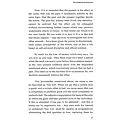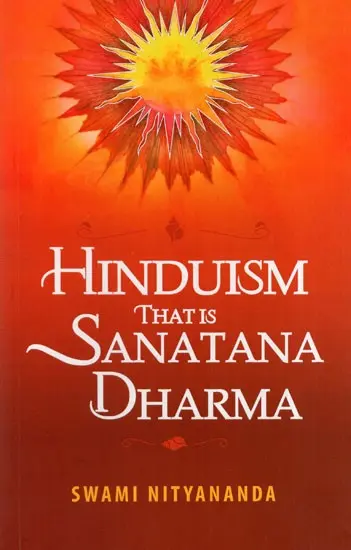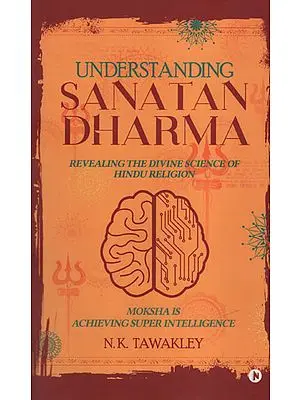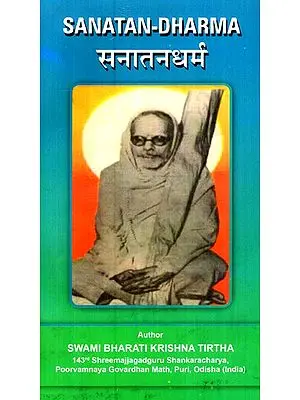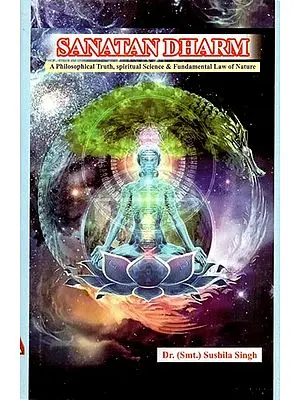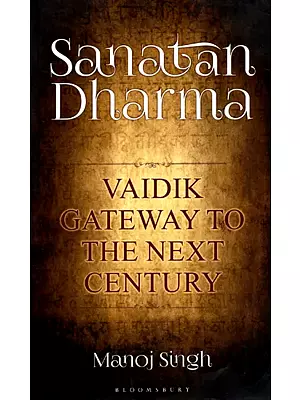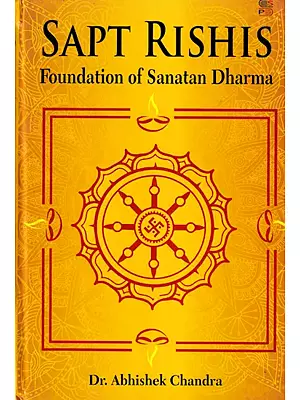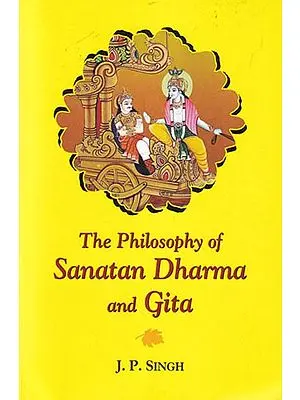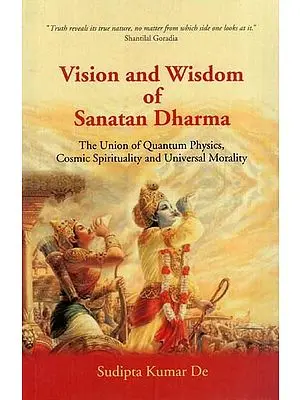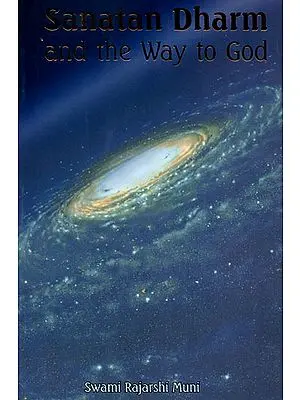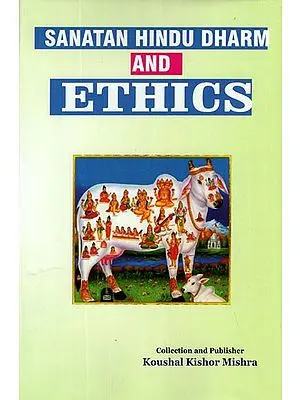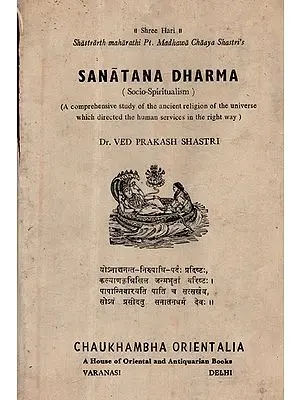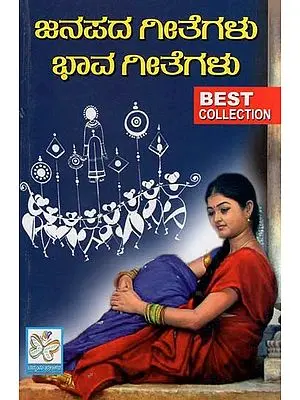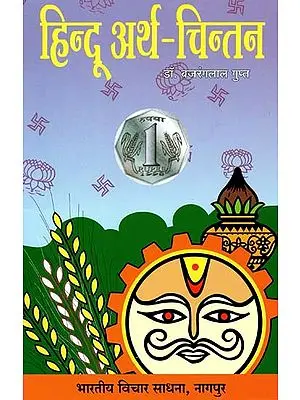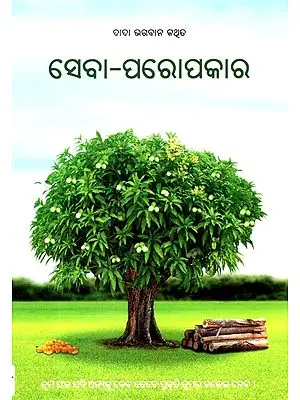Hinduism that is Sanatana Dharma
| Item Code: | IHL560 |
| Publisher: | CENTRAL CHINMAYA MISSION TRUST |
| Author: | Swami Nityananda |
| Language: | English |
| Edition: | 2023 |
| ISBN: | 8175970650 |
| Pages: | 95 |
| Cover: | PAPERBACK |
| Other Details | 8.5 inch X 5.5 inch |
| Weight | 140 gm |
"SANATANA DHARMA" the most ancient of all the living religions of today, a non-prophetic religion popularly known as "Hinduism" since the last few centuries, based on all-embracing universal love, the eternal values of life and human endeavour, time-tested knowledge and wisdom, and all-comprehensive in its vision, has a permanent message enshrined in it, for the entire humanity irrespective of time, place and circumstances.
"Religion, which is ‘Dharma’ is intensely practical. It is belief and behaviour combined."
This small treatise is addressed not to the Hindu (of that religious denomination) or the Christian or the Muslim or the Buddhist or the Jain, but to all the members of the human family inhabiting this planet, who in fact are all pilgrims to the ultimate common goal of human destiny, though through "Paths" which superficially appear to be different or divergent.
Knowledge, wherever it exists, is common property. It belongs to the whole human race and no one has any special or exclusive claim to it.
Perhaps it is not a matter of common knowledge that the term "Hindu" is not Indian in its origin and does not stand for the followers of a particular religion, but etymologically only means "an inhabitant of the land of the ‘Sindhu’ — that is India."
The Persians when they came to this beautiful, fertile and hospitable land of the ‘Sindhu’, found a civilised and cultured people who, after discovering quite a number of scientific truths in the objective world, had already made the grandest discovery of them all, in the subjective world, about the existence and nature of a Supreme Power that put all these things in their respective places for the scientists to discover. This had changed the course of their lives and had elicited the unmixed admiration of the people from beyond the seas.
It is an undeniable fact that religion today is either inadequately understood or misunderstood even by its own adherents. No religion seems to be an exception. In this age of noise and speed, when we see without observing, hear without listening, talk without saying, walk without moving, sometimes act without thinking and are incessantly immersed in; hectic activities in the rat-race of life and its problems galore, man has no time to look back on the glorious culture and vast learning which his ancestors had so laboriously acquired and bequeathed to posterity. In the few pages that follow, the reader will find material to revive and refresh man’s lost memory of those eternal basic values, traditions, culture and wisdom which uphold life and the Universe.
Herein, wherever the words ‘Hinduism’ and ‘Hindu’ are used, they stand for "Sanatana Dharma" and "A follower of Sanatana Dharma" respectively, as ‘Hinduism’ is not the name of a religion, but the "WAY OF Life" of the people inhabiting the land of the ‘Sindhu.’
While introducing Swami Vivekananda to a large audience at the Detroit Opera House on the evening of the 11th March, 1894, The Hon’ble Thomas W. Palmer said:
“Two Knights of honour once met on the field and seeing a shield hanging on a tree, they halted. One said: "What a very fine silver shield.” The other hastened to reply that it was not silver, but copper. Each disputed the other’s statement until at last they got off their horses, tied them on to a tree, and drawing their swords, fought for several hours. After they were exhausted by loss of blood, they staggered against each other and fell on the opposite sides from where they had been fighting. Then one chanced to glance up at the pendent shield and said: "Oh! You were right, my Friend! The shield is copper." The other also looked up and said: "It is l who was mistaken, the shield is silver." lf they had the patience to look at both the sides of the shield, in the first place, it would have saved the unnecessary loss of much precious blood. l think, that if we care to dispassionately look at both sides of every question, perhaps there would be no argument or fighting.
“We have with us tonight, a gentleman, who from the Christian standpoint is, l suppose, a pagan. But he belongs to a religion which was old, long before ours was even thought of by men. l am sure it will be pleasant to hear from the copper side of the shield. We have looked at it only from the silver side."
Most of us do not have the patience to see the other side. The lesson is obvious. Here is a humble attempt to present the other side of the shield.
“A savage man might find a few jewels, and prizing them, tie them together with a rude thong and string them around his neck. As he becomes slightly civilised, he would perhaps exchange the thong for a string. Becoming still more enlightened, he would fasten his jewels with a silken cord and when possessed of high civilization, he would make an elaborate setting for his jewels. Bu throughout all these changes in the settings, the jewels – that is, the essentials – would remain the same.” (Courtesy: “Swami Vivekananda in America – New Discoveries” by Marie Loise Burke.)
This is exactly what Lord Krishna taught Arjuna in the battlefield of Kurukshetra, 5,116 years
ago:
“Mayi Sarvamidam protam
Sutre Maniganaa eva”
“All this is strung on Me, as rows of gems on a string.”
When will man realize this fundamental truth? Asks the really educated and cultured man, irrespective of the religion to which he belongs or the path he follows.
| The Prologue | 1 | |
| What is Hinduism? Who is a Hindu? | 3 | |
| What is Sanatana Dharma? | 6 | |
| The Creed of Sanatana Dharma | 8 | |
| The Articles of the Sanatani Creed | 10 | |
| The Fundamental Doctrines | 11 | |
| Why so many Religions? | 14 | |
| Catholicity and Tolerance | 20 | |
| The Scriptures | 23 | |
| (a) The Scriptures tabulated | ||
| (b) The Srutis – the Vedas including the Upanishads | ||
| (c) The Smritis – the Upavedas, Vedangas, Veda-Upangas, the Dharma Sastras, the Purunas and the Itihasa | ||
| Our Scientific Heritage | 36 | |
| The Philosophy of the Darsanas – The Visions | 47 | |
| The Monotheistic Hindu Pantheon | 51 | |
| The Prasthanatraya | 55 | |
| The Paths or Yogas (Karma: Bhakti: Raja & Jnana) | 57 | |
| The Spiritual Journey (Dwaita – Visishtadwaita – Adwaita) | 60 | |
| Varna and Ashrama | 62 | |
| Bondage and Liberation | 66 | |
| The Mumukshu and the Adhikarin | 68 | |
| The essence of all Scriptures | 72 | |
| The Journey’s End | 74 | |
| The Epilogue | 76 | |
| Glossary | 78 |
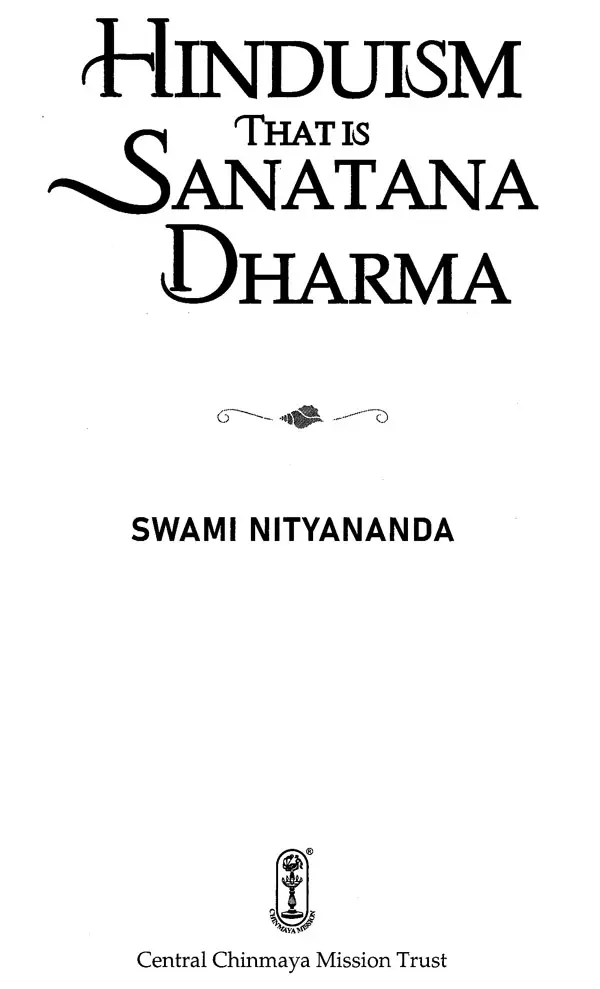
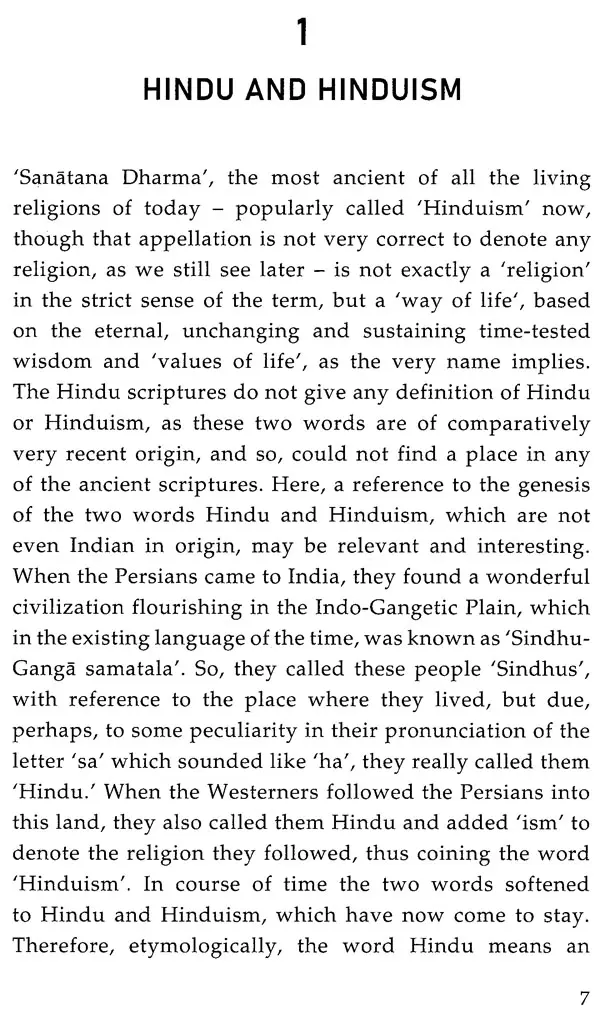
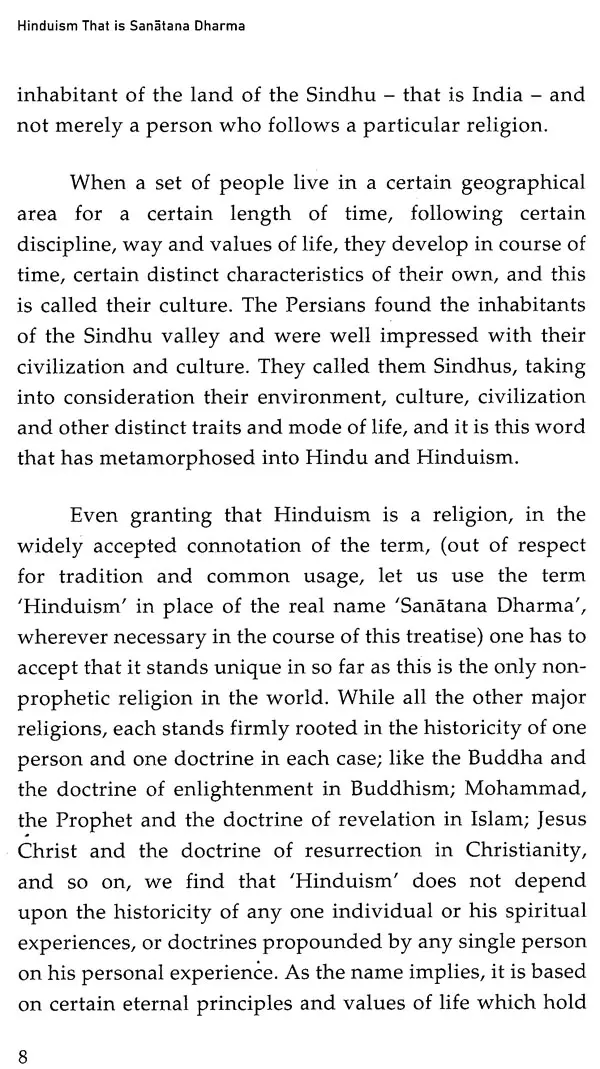
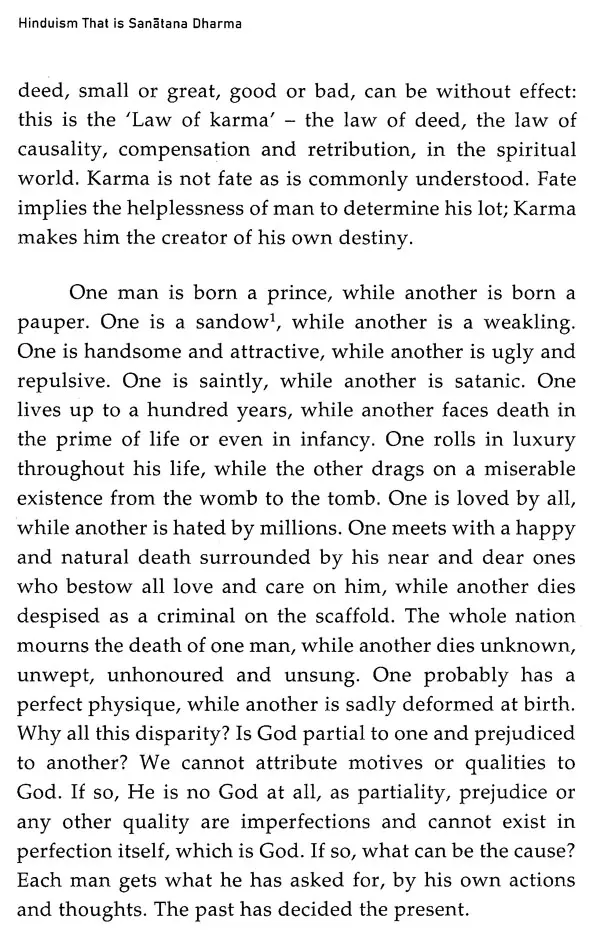

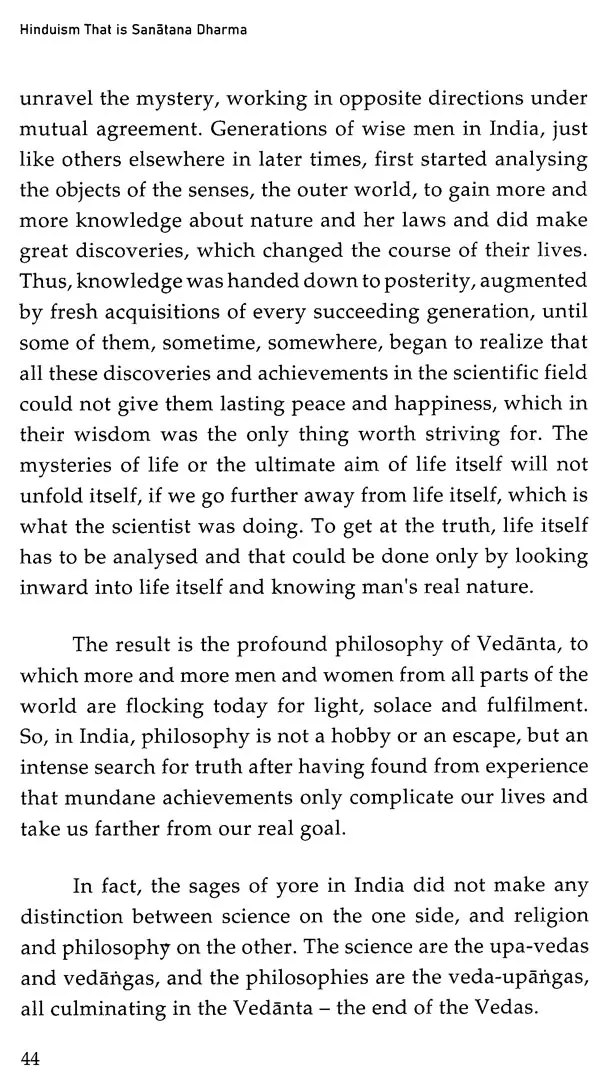
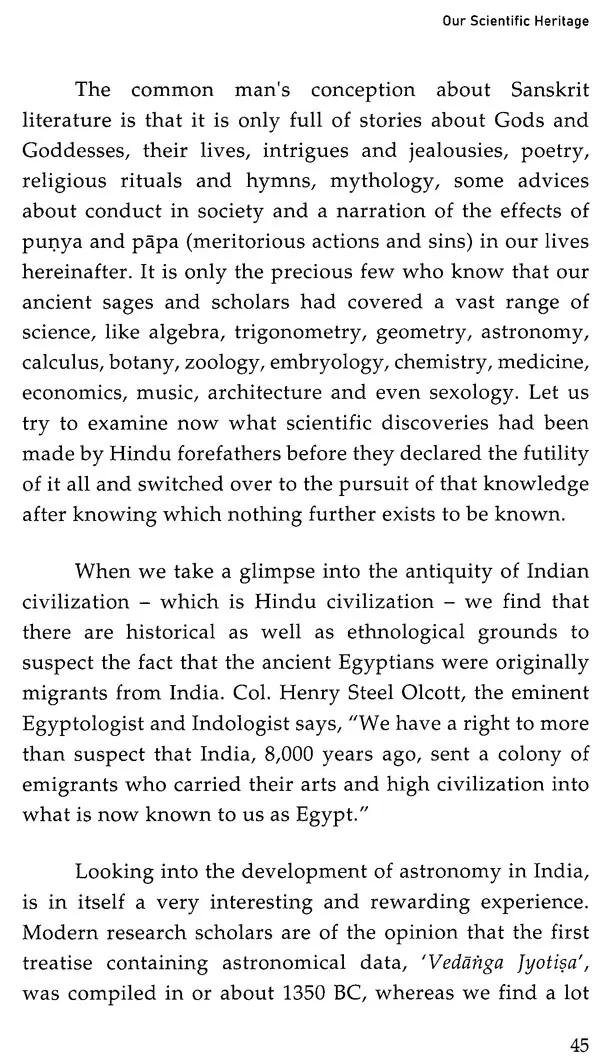
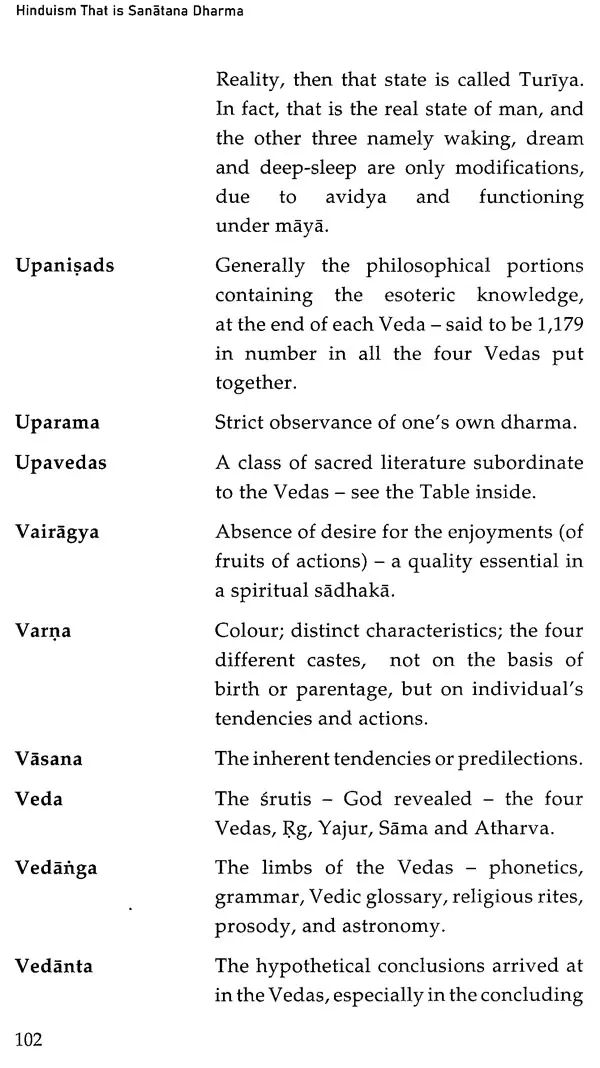
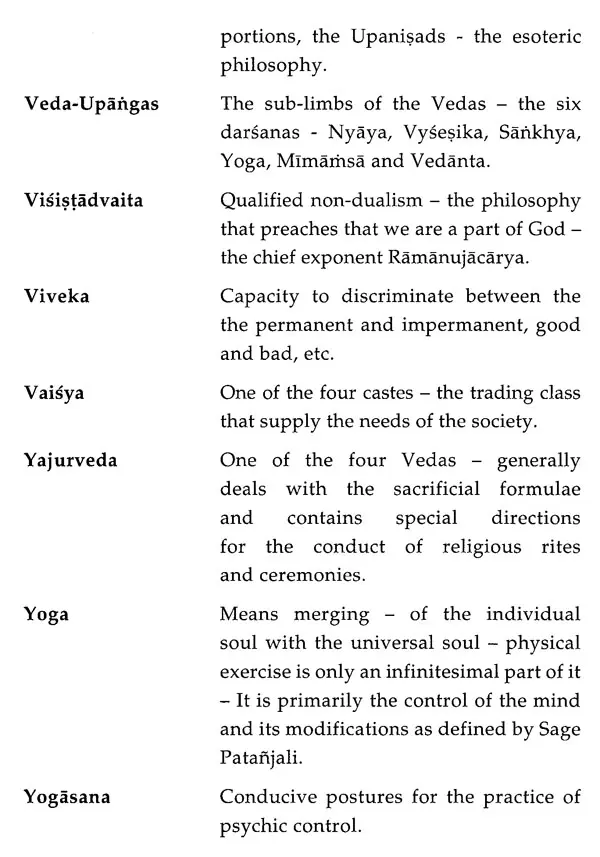
-
Q. What locations do you deliver to ?A. Exotic India delivers orders to all countries having diplomatic relations with India.
-
Q. Do you offer free shipping ?A. Exotic India offers free shipping on all orders of value of $30 USD or more.
-
Q. Can I return the book?A. All returns must be postmarked within seven (7) days of the delivery date. All returned items must be in new and unused condition, with all original tags and labels attached. To know more please view our return policy
-
Q. Do you offer express shipping ?A. Yes, we do have a chargeable express shipping facility available. You can select express shipping while checking out on the website.
-
Q. I accidentally entered wrong delivery address, can I change the address ?A. Delivery addresses can only be changed only incase the order has not been shipped yet. Incase of an address change, you can reach us at help@exoticindia.com
-
Q. How do I track my order ?A. You can track your orders simply entering your order number through here or through your past orders if you are signed in on the website.
-
Q. How can I cancel an order ?A. An order can only be cancelled if it has not been shipped. To cancel an order, kindly reach out to us through help@exoticindia.com.





